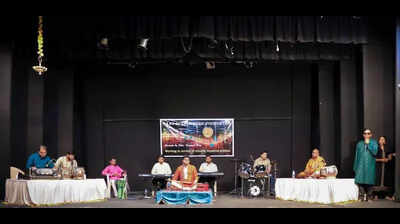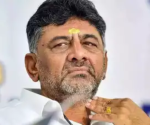Beyond sight: Visually impaired band breaks barriers to create fusion music in Karnataka | Bengaluru News

Bengaluru: What does it take to create music without seeing a single note or instrument? For visually impaired musicians, the answer lies in extraordinary hearing, memory, and relentless practice.Far from being limited by their lack of sight, these artists transform challenges into strengths, mastering complex instruments and rhythms through sound alone. Yet, despite their immense talent, visually impaired musicians often remain invisible in the mainstream music world, facing limited opportunities, deep-rooted stereotypes, and a lack of recognition.To challenge this, a Belagavi-based band of visually impaired musicians, Visionary Rhythms, is ready to rewrite the narrative with their debut performance in Bengaluru. The band is set to perform in Sri Krishnadevaraya Kalamandira, behind Chowdiah Memorial Hall, on June 1 from 5.30pm. Santosh Puri, a tabla maestro with years of experience, said: “Whether sighted or blind, musicians don’t really look at their instruments while playing. They face the audience and play by listening and feeling. Vision is not a necessity; what matters most is hearing power and concentration.” According to him, the learning process, known as riyaz (practice), is the key to mastery. “We always tell students: practice makes it perfect.Hard work will make you a master.”Santosh’s band exemplifies a fusion of Indian classical and Western music. Classical instruments like tabla, harmonium, flute, and violin blend with Western instruments such as keyboards and drum sets. Even their attire reflects this mix, with traditional Indian kurtas paired with Western-style jackets. This fusion is not only musical but cultural, aimed at engaging a wider audience and breaking musical boundaries.The band’s harmonium player, Mazhar Shaikh, pointed out that the real challenge lies beyond learning music — it is in gaining opportunities and recognition. “There is no problem in creation or effort, nor in teaching or learning. The problem is in presentation and getting chances,” he said. Mazhar highlighted the stigma and logistical concerns organisers often have, fearing blind musicians cannot navigate stage setups independently.“Many think we need special assistance or signage on stage, which limits our chances to perform.”Violinist Sanjay Upadhye shared his personal journey of finding his place in music: “Initially, I was trained in singing and harmonium, but my teachers noticed my potential and guided me to violin due to the instrument’s suitability for visually impaired artists. Violin is known as a blind man’s instrument because it has no frets or markers; you create perfect notes by feel and memory.” Flautist Prashant Baniya added how collaboration among visually impaired musicians as a band has been transformative for him as a musician. “I was playing the flute for over 20 years. It started simply because my father saw me at a fair with a flute. When I met my bandmates, we instantly realised that together, we could do something special. We were all doing well individually, but when we joined to form a band, the synergy created something new.Sighted musicians rely on eye contact for coordination, but we depend on our hearing. That is our strength,” he said.
















